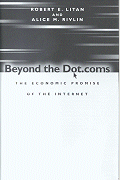Economists and some policy makers have been arguing lately whether, at the national level, U.S. economic growth is likely to pick up where it left off before the Great Recession – at about 3 percent per year – or dip well below it. In an effort to help shed light on this debate, we have recently crunched some data spanning the past 30 years (ending in 2011) to see whether there is long-term trend in two critical measures of the dynamism of the economy: the “entrepreneurship rate” (share of total firms accounted for by firms less than one year old) and the labor force “churn rate” (new hires plus quits and layoffs as a share of total employment).
The new firm rate is important because entrepreneurs bring new products and services to the market – much needed new “economic blood”—and often establish enterprises that are more productive than existing firms. Given the Great Recession and the slow recovery from it, it may seem counterintuitive that “churn” in the labor market is a good thing, but it is. The more willing firms are to hire people and the more willing they are to quit, even as some workers are laid off, the stronger is the “creative destruction” that is the hallmark of a dynamic economy.
So what do the data show? The answers may come as a surprise.
For one thing, at the national level, both the new firm rate and the churn rate have been declining for three decades – through 2011, the latest year for which we had data (we also wish we had earlier data to see whether the 1950s through the 1970s exhibited a different pattern, but unfortunately those data don’t exist). These trends, especially, may surprise many given the heightened interest in entrepreneurship during these decades, as well as the celebrated status of America’s super entrepreneurs, like Bill Gates, Steve Jobs, Mark Zuckerberg, among many others, as well as popularity of various television shows about entrepreneurs and those who might fund them (think Shark Tank or Silicon Valley). If not for entrepreneurship being such a strong part of the cultural zeitgeist, the decline in the new firm formation rate probably would be worse than it has been.
But here’s an even more shocking finding, at least to us. It turns out that the national decline in the firm formation and labor market churn rates is mirrored in declines in every one of the fifty states and all but one of the nation’s 366 largest metropolitan areas. This includes California, and its two hotbeds of entrepreneurial activity, the San Francisco-Silicon Valley area and Los Angeles-Orange County. It is true that entrepreneurship rates in each of these regions was above the national average thirty years ago, but the firm formation rate dropped about as steeply in these areas as it has for the nation as a whole.
We know it may be hard to believe, especially for Californians, who may think they are different. But California is just like other states in displaying a decline in dynamism. It may be one reason, among many, that some Californians have decided to leave for other states.
What can be done about all this? Many localities around the country are trying to encourage entrepreneurship through “business accelerators” that both teach entrepreneurial skills and build entrepreneurial communities (starting and running one’s own business can be a lonely experience and having a strong social network can help). These experiments are too young to know how well they will work, but there is some positive anecdotal evidence suggesting they do. Whether they will be enough to turn the falling firm formation rate around also remains to be seen.
The other, more clearly positive, measure is to change our nation’s immigration laws to let in more skilled, entrepreneurial foreign residents to work here permanently, not just temporarily as is now the case for those lucky enough to get an H-1B visa. The bipartisan immigration bill passed by the Senate earlier this year would substantially increase the number of green cards handed out to foreign students who earn masters and PhD’s in the so-called “STEM” fields (science, technology, engineering and math) and to foreign entrepreneurs. But so far, that bill has languished in the House, where immigration opponents and critics of the Administration’s immigration policies want a more piecemeal approach to immigration reform.
All we can say is that while Washington gridlock on immigration continues, the secular downward trend in entrepreneurship also is likely to continue. There are ways to stop it – and we should.








Commentary
Op-edDeclining Economic Dynamism: California is No Different
May 10, 2014